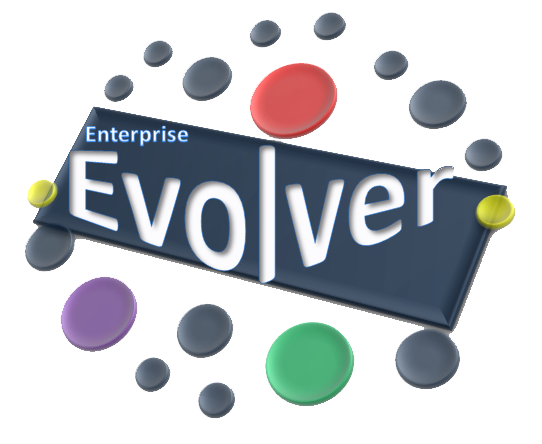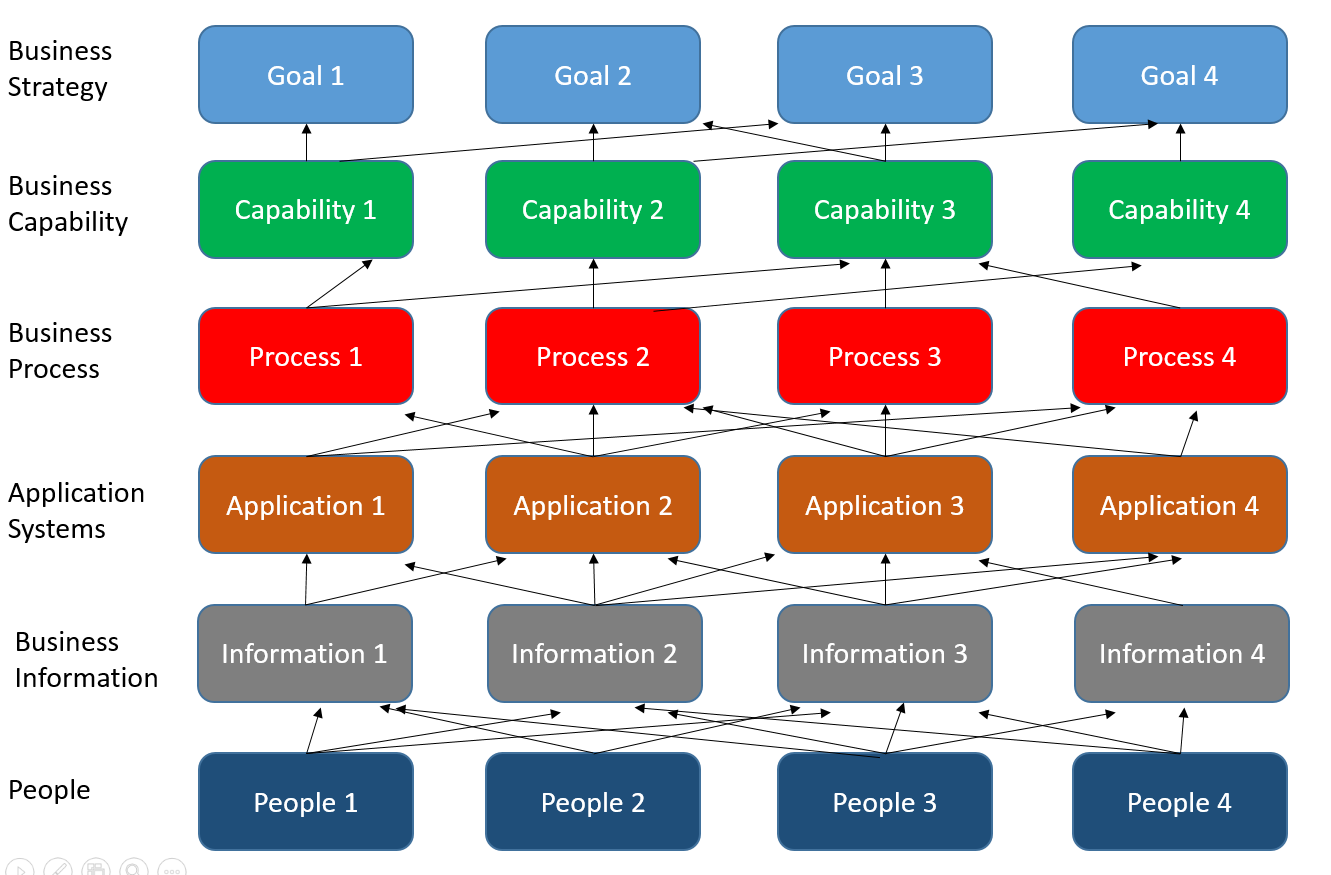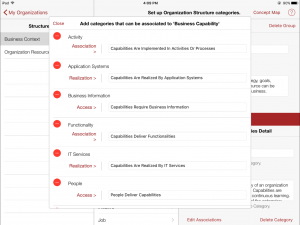Business capability modeling provides a shared understanding of the relative value of all business activities the business must perform to achieve the desired outcome. A business capability can be aggregated into people, process, technology, information and any tangible/intangible resource. It is important to understand that the business goals and vision define the ends whereas business capabilities provide the means to achieve those ends. Business Capability Model is used to drive consensus across a multi-year business transformation planning and to link strategy with execution. Conventional mapping methods such as mapping business processes to application systems, people and technology do not help in building a holistic and adaptive organization. Whereas business capabilities function at a level above organization silos. Business Capability Model brings many benefits such as:
- Business Capability Model captures the business interests (e.g. Goal, Strategies, Priorities, Metrics etc) and the business reality
- Business demands are expressed in terms of business capabilities to understand the impact (eg. new, redesign, enhanced etc) of demand on each capability.
- IT stakeholders and business stakeholders talk the same language.
- Business Capability Model helps to analyze the complex business environment
Putting Capability Model to work
The Evolver app offers many powerful features to model business capabilities. In the following three steps, you can quickly create capability model and big picture map.
1- The first step is to familiarise with the existing meta-model. The built-in meta model can be easily configured to suite to your own needs. The following picture shows relationships between business capability and various other business parts. You can modify these relationships by adding or removing as per your need.
2- The second step is to use create an organization and use Visual editor to quickly create business capability model. The Evolver app also offers import capability to import your capability model using MS excel import utility. The following map depicts how business strategy is linked to execution using business capability model. When a capability map is linked to a activities/business processes to application systems, people and business information , the resulting map depicts how business is supported by IT. This mapping allows service and system developers to trace their respective services and systems that they are developing back to the capabilities and strategic planners can follow a capability down to its implementation as a software solution. Ultimately the map helps in removing redundancies, duplicates and eliminate complexity. Since the map is data driven, you don’t see messy lines going from one business part to another to depict the relationship between those parts. The Evolver’s feature like Filters, Tags, Links & Search make it easy to create relationships between various business parts and blueprints & models quickly and a friendly way to navigate it all.
3- The third step is to create the capability network graph (aka the Big picture ) using Insight Analyzer feature. The Insight Analyzer feature provides many functionalities for users to visualize and analyze enterprise complex data and relationship through interactive directed network graph (“graph”). The Insight Analyzer makes it easy to extract new information out of architecture views and maps that are created using the Visual Editor . For example, analysts and architects can identify which business capabilities are most used in business processes across the functional areas. Architecture views and maps only offer the partial glimpse of an enterprise reality because it lacks a sense of architecture continuum and hence can’t alone be used for all kind of analysis and pattern discovery. It misses the ‘Big Picture’ because views and maps are created from a perspective of a specific stakeholder. The Insight Analyzer offers a visualization technique to illustrate the ‘Big Picture’ (e.g. total visualization) at any given point in time. You can visualize how capabilities are built or enhanced over a period of time. What application systems were acquired and retired to support business capabilities . What application systems, people, business processes and information come together to support a particular business goal and strategy.









